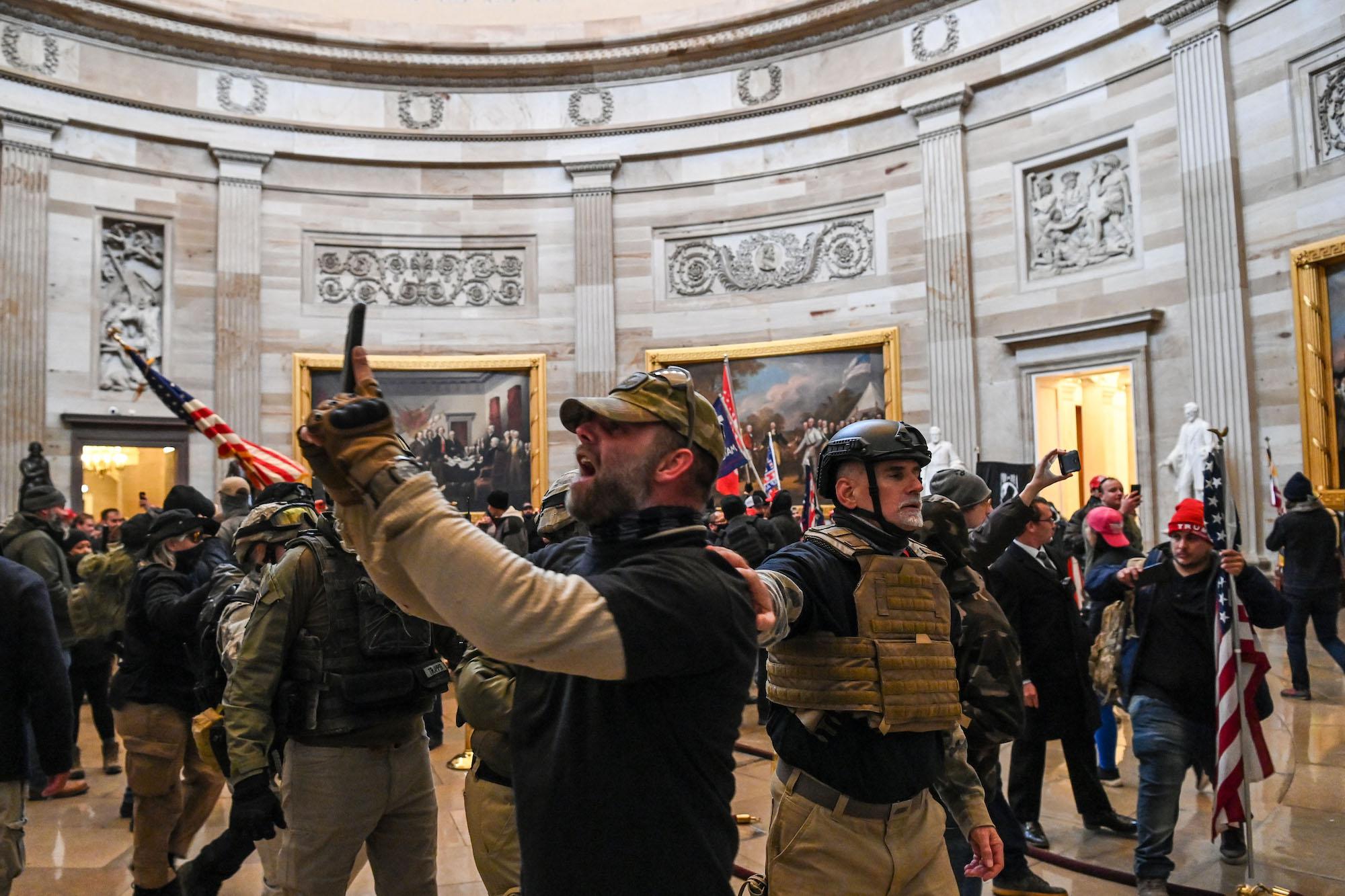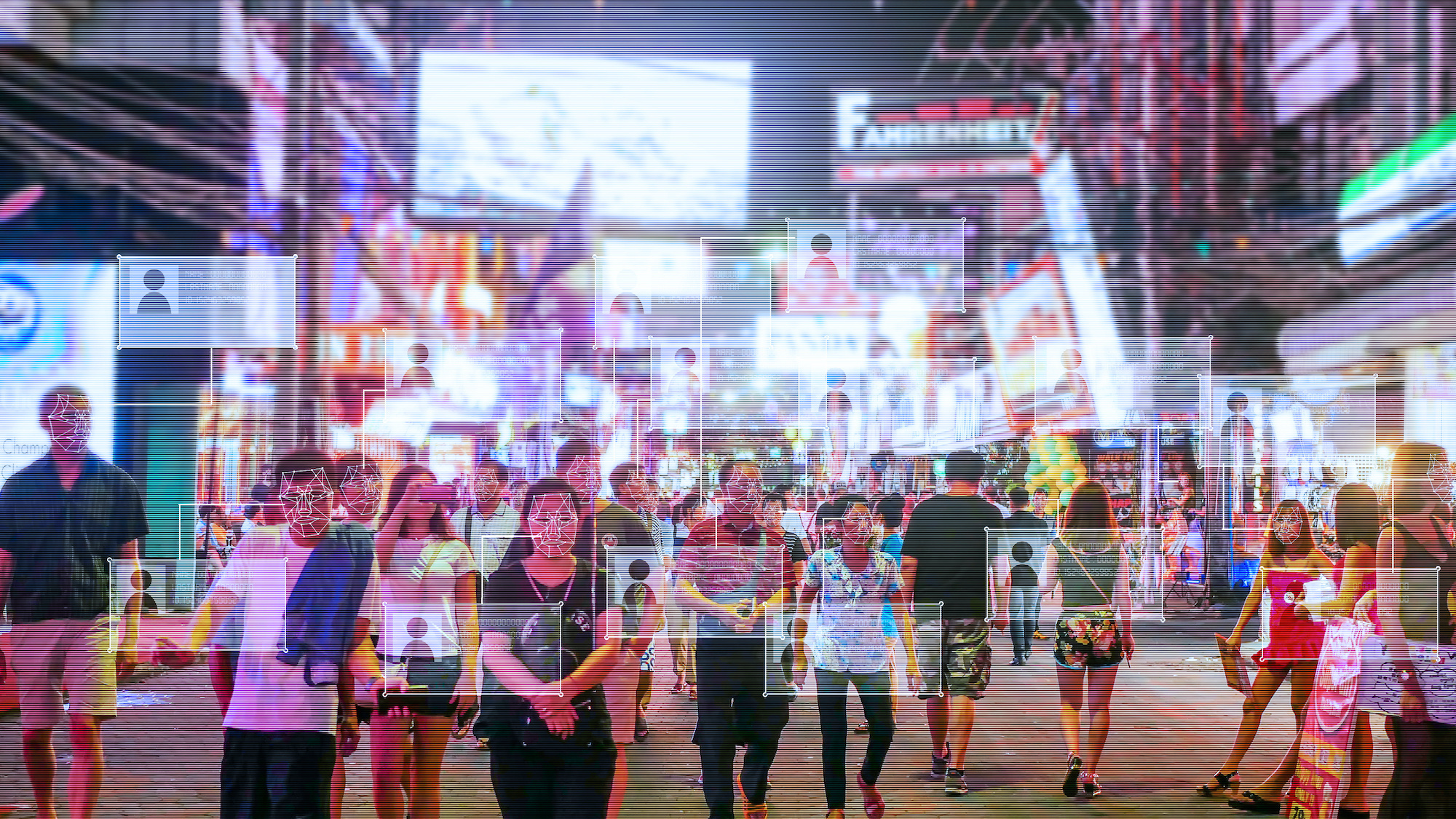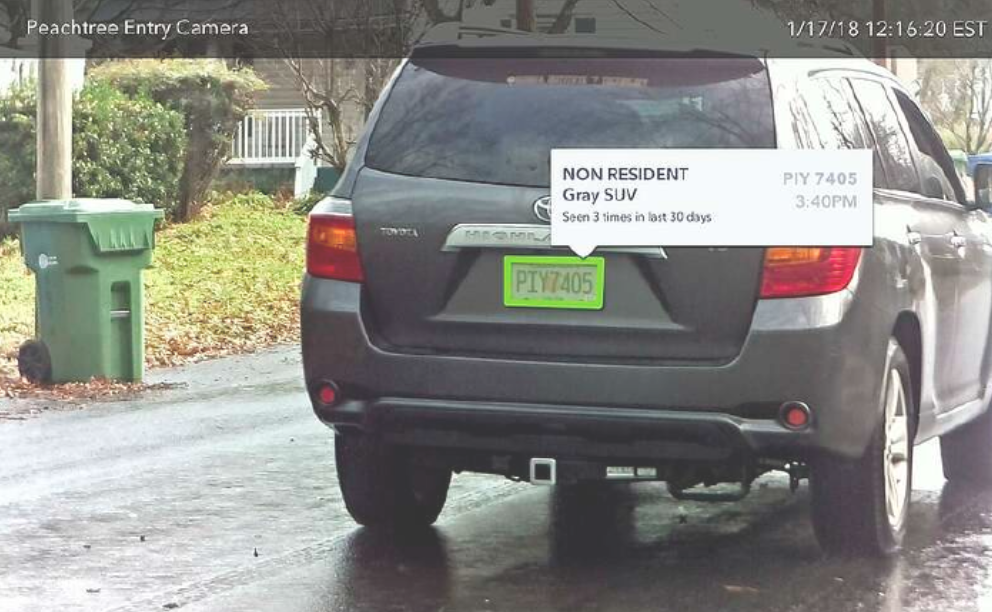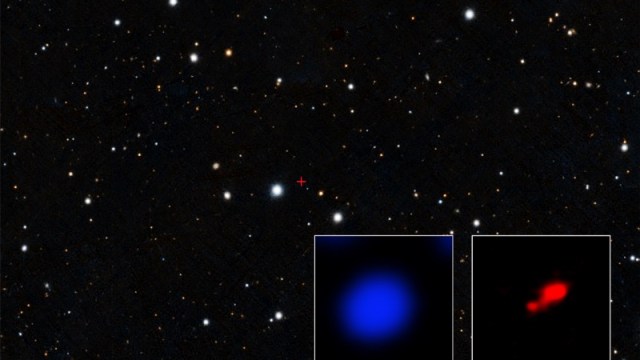The surveillance technology that will watch us all, all the time
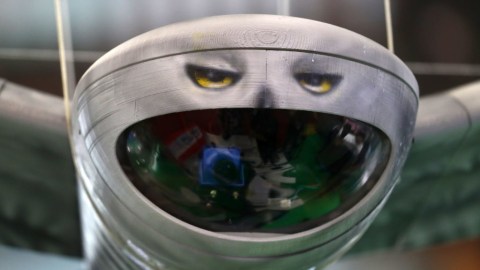
Photo by Stanislav KrasilnikovTASS via Getty Images
- In his new book, Eyes in the Sky, Arthur Holland Michel details the evolution of aerial surveillance technology.
- Cameras aboard drones can monitor the entirety of 50 square kilometers for hours without refueling.
- New aerial technologies will create the privacy fights of the future.
That fiction inspires reality is nothing new, yet the depth of this process can be startling—and unnerving. It’s hard to imagine Enemy of the State, a 1998 drama-mystery in which Will Smith and Gene Hackman battle a corrupt NSA official played by Jon Voight, would inspire the revolution in aerial surveillance technology currently happening around the world. Yet as Arthur Holland Michel reveals in his new book, that’s exactly what happened after a San Francisco-based researcher saw the movie.
For Michel, the founder and co-director of the Center for the Study of the Drone at Bard College, Eyes in the Sky: The Secret Rise of Gorgon Stare and How It Will Watch Us All is the culmination of nearly a decade-long research project into the burgeoning business of Wide Angle Motion Imagery (WAMI). To put this into perspective, here’s one project Michel touches upon, dating back to August 2009:
“In its final form, ARGUS had 1,854,296,064 pixels, enough imaging power to spot an object six inches wide from an altitude of 25,000 feet in a frame twice the width of Manhattan.”
Though the term “Orwellian” easily applies to such a technology, Michel’s illuminating reporting touches something deeper. Numerous American cities have already been surveilled using these god-like cameras, including Gorgon Stare, a camera-enabled drone that can track individuals over a 50-square kilometer radius from 20,000 feet.
Here’s the real rub: the feature that allows users to pinch and zoom on Instagram is similar to what WAMI allows. Anything within those 50-square kilometers is now under the microscope. If this sounds like some futuristic tech, think again: Derivations of this camera system have been tested in numerous American cities.
I recently chatted with Michel about his book. Though he ultimately feels hopeful humans will be benevolent with this technology, he recognizes the dangers it poses in the hands of authoritarian regimes (as well as scorned lovers and voyeurs). The time for legislating drones is now, as these cameras are no longer down the road. They’re here.
The future of surveillance technology
When did you first decide to become a horror writer?
I fell into it when I was a student at Bard College. I had this crazy idea to start a research institute that would study drones in all their many forms. That project really took on a life of its own. By the time I graduated in May 2013, we had enough traction that I started working for the college right away. If you study drones, you get to think about and look at a whole range of very nightmarish technologies. The aerial surveillance technologies that the book looks at were particularly frightening to me. I felt like something needed to be written about them.
You write that everyone you talk to who’s involved thinks that they’re doing it for good reason. Technology itself isn’t good or bad, but it’s how we use it, and humans are natural voyeurs. It seems so easy and exploitable.
Imagine you have the superpower to watch an entire city simultaneously. Initially you will, like any superhero, use it for very noble ends. You will track down violent criminals. You will bring murderers to justice. But as you’re doing all that, you might also notice that there are lesser evil people committing lesser crimes. Maybe someone’s illegally dumping garbage in an area where they shouldn’t and you think, “I have this capability, I might as well track them down and bring them to justice too.” As you work your way down the order of criminal acts, you soon start finding yourself rubbing up against areas where the law isn’t so clear. A peaceful protest in my eyes might be a riotous assemblage of thugs in the eyes of somebody else.
Say there is a big public protest. With this camera you can follow thousands of protesters back to their homes. Now you have a list of the home addresses of all the people involved in a political movement. If on their way home you witness them committing some crime—breaking a traffic regulation or frequenting a location that is known to be involved in the drug trade—you can use that surveillance data against them to essentially shut them up. That’s why we have laws that prevent the use of surveillance technologies because it is human instinct to abuse them. That’s why we need controls.

A drone photo shows the crowd sunbathing at Florya Gunes Beach during the third day of Eid Al-Adha (Feast of the Sacrifice) in Istanbul, Turkey on August 13, 2019.
Photo: Muhammed Enes Yildirim/Anadolu Agency via Getty Images
You watched a boy get shot in Brooklyn who could have found justice if such a technology was in use. How is the public grappling with the desire for justice and retribution combined with the fear of privacy issues?
It is one of the questions of our time. If we have the capability to bring a violent criminal to justice, then we have a responsibility to use that capability. I saw the violent shooting of this 19-year-old boy. Fortunately he didn’t die, but I don’t feel particularly safe knowing that his assailants are still roaming free. If that technology had been available at the time, a really significant part of me would have wanted it to be used.
Are there ways of finding a balance? I believe that there are. We found that balance in the past. Consider wiretapping technology. When that technology was first introduced in the early 20th century, there were no controls, and so police were using it on whoever they felt like listening to. Once controls were imposed, there were a set of really strict requirements, namely that you need a warrant for probable cause as deemed by a judge with the court order to listen in on a private conversation.
I live in Los Angeles, where marijuana is recreational. On a federal level, it’s not legal. So there’s this disparity in the law. A lot of companies are using CBD, yet they’re concerned because it’s not federally legal. Have you seen any tension between, say, San Francisco, where the city government is implementing rules on facial recognition and aerial surveillance, and the federal government, which could disregard such rules?
It’s a fantastic question because as I point out in the book, these conversations are not happening at a federal level. As far as I know, there has only been one congressional document that speaks to the potential dangers of wide area airborne surveillance. That’s a problem, because there are a lot of federal agencies that are very eager to use this technology. The FBI and Department of Homeland Security have extensive aerial surveillance programs.
So far, we have not to my knowledge seen much outright tension between the local level and the state level, though a lot of these operations and the conversations that happen around them are shrouded in secrecy. There is a good chance that were there any tension or pushback from the local level, we would not hear about it. If Congress and federal agencies step up to the task of actually controlling these technologies, then the state level and the federal level and the local level may see more eye-to-eye on these measures.
Gorgon Stare in Baltimore
Your book is heavily rooted in the U.S. Other governments could be much less likely to care about legislation and much more likely to monitor their population at all times.
Absolutely. That’s why the proliferation of this technology is particularly troubling. We know, for example, that Chinese research institutions have invested considerable resources in developing certain capabilities for this technology that has nothing to do with building cameras, but with building algorithms to analyze the data from those cameras.
A whole city as viewed through a camera is a lot of information for human eyes to process. If you can process that information with a really smart computer visions system, then the surveillance becomes activated and you can see everything at once. It’s also particularly troubling because we know that China has an abysmal record when it comes to civil liberties. We know that it has an extensive program of surveillance in some of the western provinces where minorities live. With a camera like the cameras that I discuss in the book, they’d be able to do all sorts of unthinkable things.
Did you find any problems in terms of the technology itself or the people behind it profiling others?
There is a tremendous amount of evidence that suggests that all sorts of different algorithms and automated analysis systems in use today are biased. We know that’s the case of facial recognition systems; we also know that it is likely to be possible in algorithms that do predictive policing based on historical crime data for particular neighborhoods. There’s also the reliability element. When computers are analyzing something as subtle as a set of potentially suspicious behaviors, they’re likely to make mistakes. It’s not always clear to the human operators who are working with that automated system when it will make a mistake and when it won’t. That makes the relationship between the computer and the human very troublesome.
Since aerial space is public property, if someone films me in a backyard, it isn’t their fault for filming but my fault for not “protecting myself.” Do you think we’ll see public mobilization against these technologies?
I’m optimistic. Just as we are seeing, albeit slowly, a mobilization against some of the large internet firms because of all the data that they collect on us, people are starting to realize that the current regulations in place for protecting our privacy are not quite up to the task of regulating all the tools that are now at our disposal. You point to one very good example of that, which is that we do not, as per standing U.S. privacy law and precedent, have any expectation of privacy in any place that is visible from the sky. It doesn’t matter whether you’re in a backyard or in a secluded neighborhood surrounded by trees, if you’re visible from above, anything is fair game.
That made sense at a time when the only aerial surveillance technologies in existence were expensive, loud, rare police helicopters that could only be used very sparingly for high priority investigations and operations. Now things are very different because with these wide area surveillance technologies. A single aircraft flying so high that you may not even be able to spot it from the ground can be watching you in fine-grain detail. That’s completely legal because in the eyes of the law that high altitude persistent surveillance airplane is no different from a low altitude helicopter. Whenever I tell someone that these technologies are completely legal, I always get a reaction.

On March 12, 2019, according to a report by the Stockholm International Peace Research Institute (SIPRI) of Sweden on March 11, China has broken through the traditional situation that the export of armed UAVs is dominated by the United States.
Photo: Long Wei / Barcroft Media via Getty Images
You make one prediction in a footnote that in 10 years we will have a third license plate on the roof of our cars so these cameras can track us. Do you have any other predictions?
That footnote is funny. It has gotten so much attention since the book came out. That really threw me off because I was writing about police departments following cars with aerial surveillance technologies not being able to see license plates. It just seems so obvious to me that we’re going to have license plates on our roofs. Now that the book is out, many people have heard about it and seem to be pretty displeased by the prospect.
One of the predictions that I stand by is that whether or not every city in America will someday be watched by an all seeing eye in the sky. I believe that every city will be watched in some wide area way. Even if you don’t have an airplane doing this type of surveillance, there are all kinds of other technologies that can track us wherever we go at all times of day. You could put the same types of cameras on the tops of buildings. You could apply tracking algorithms to CCTV cameras. You could use a dense network of license plate readers. All of these surveillance technologies operate on a similar principle, which is collect everything and then separate the wheat from the chaff. It’s only when you collect everything that you can seek crimes that you previously did not know about.
It’s a big data theory of surveillance. That’s concerning because with the advent of automation, this data can be analyzed in all kinds of unimaginable ways. It can be analyzed to look for anomalies, because anomalies are considered suspicious and anomalies can lead us to crimes before they happen. We don’t want to live in a society where every deviation from the norm is marked as suspicious.
—
Stay in touch with Derek on Twitter and Facebook.

